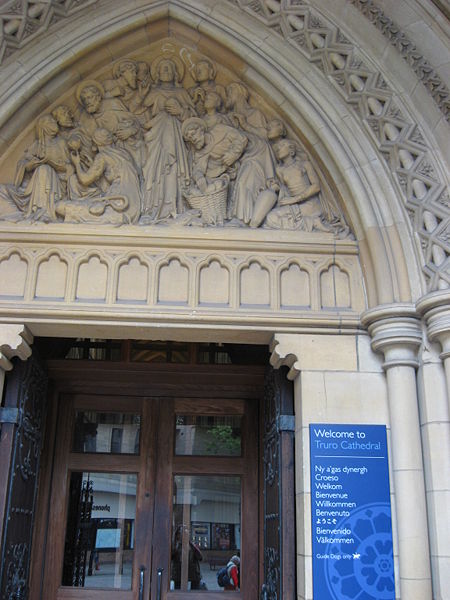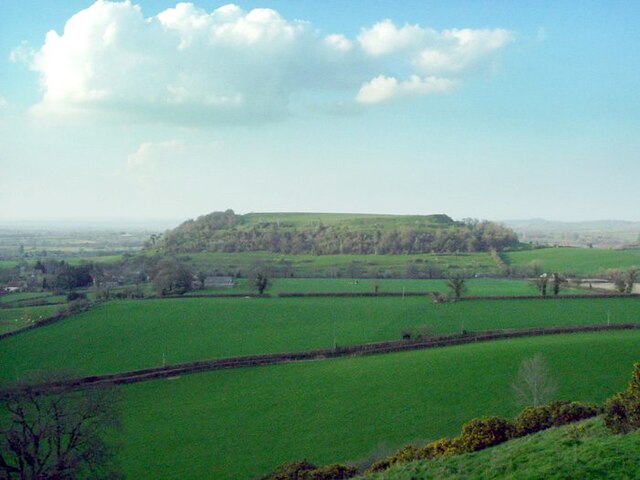The history of Cornwall goes back to the Paleolithic, but in this period Cornwall only had sporadic visits by groups of humans. Continuous occupation started around 10,000 years ago after the end of the last ice age. When recorded history started in the first century BCE, the spoken language was Common Brittonic, and that would develop into Southwestern Brittonic and then the Cornish language. Cornwall was part of the territory of the tribe of the Dumnonii that included modern-day Devon and parts of Somerset. After a period of Roman rule, Cornwall reverted to rule by independent Romano-British leaders and continued to have a close relationship with Brittany and Wales as well as southern Ireland, which neighboured across the Celtic Sea. After the collapse of Dumnonia, the remaining territory of Cornwall came into conflict with neighbouring Wessex.
Boscawen-Un stone circle looking north
Ruin of Cornish tin mine
Entrance at Truro Cathedral has welcome sign in several languages, including Cornish
Mên-an-Tol ("The holed stone"), an Early Bronze Age monument near Madron, in the far west of Cornwall.
Dumnonia is the Latinised name for a Brythonic kingdom that existed in Sub-Roman Britain between the late 4th and late 8th centuries CE in the more westerly parts of present-day South West England. It was centred in the area of modern Devon, but also included modern Cornwall and part of Somerset, with its eastern boundary changing over time as the gradual westward expansion of the neighbouring Anglo-Saxon kingdom of Wessex encroached on its territory. The spelling Damnonia is sometimes encountered, but that spelling is also used for the land of the Damnonii, later part of the Kingdom of Strathclyde, in present-day southern Scotland.
The form Domnonia also occurs and shares a linguistic relationship with the Breton region of Domnonée.
Cadbury Castle, Somerset, a possible early Dumnonian defensive site
King Doniert's Stone in Cornwall, believed to commemorate Donyarth, the last recorded king of the rump state of Dumnonia






